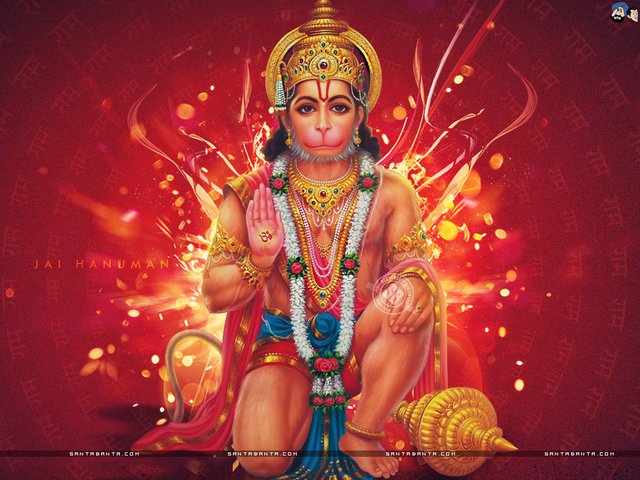Exploring the Possibility that Ninghizzida and Nergal Could Be Papa Legba and Baron Samedi or Thought Form Beings
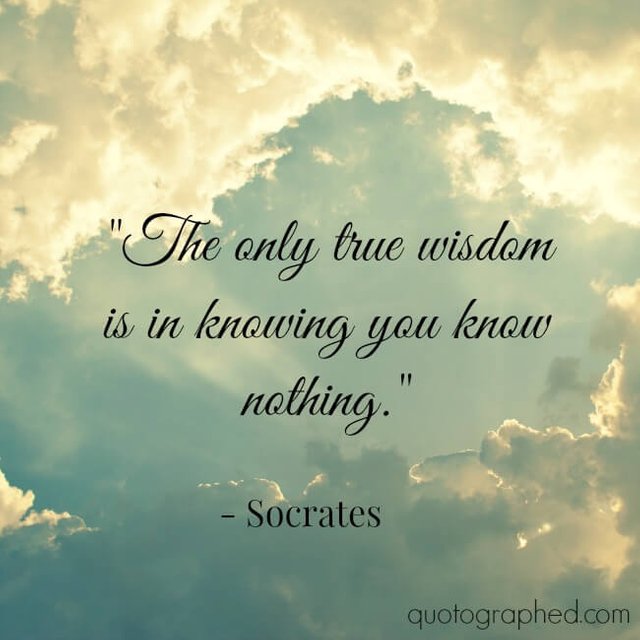
YES!!! I will be the first one to admit that i over-analyze everything, think "too much", care too much about "saving the world", and say stuff that the majority of people don't give a shit about. So, this Virgo thanks the gods for my blog to organize and bring my horse racing thoughts to a focal point that i can look at. It's actually very fun and relaxing to me to use my mind in lieu of depending on others to entertain me, and i publish because my Guides push me to not because i like opening up to people. In fact, when i consider that humans, as a species, allow the decimation of Mother Nature my opinion of many people is not very good. I also know that i have few readers, and i feel that These must have more intelligence than the average human. I thank Y'all <3
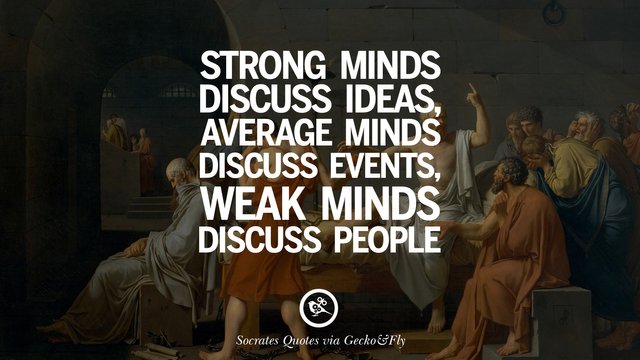
My hero, Socrates, is One who i am much like so i feel in goode company. He was ridiculed for pushing boundaries, and eventually killed for questioning the gods.
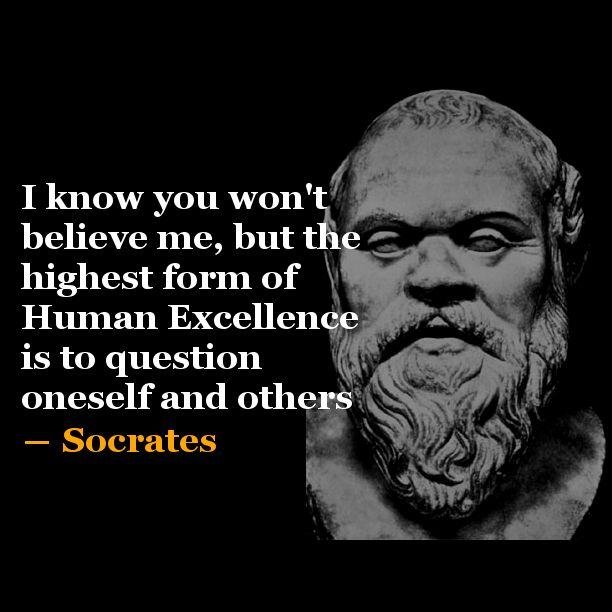
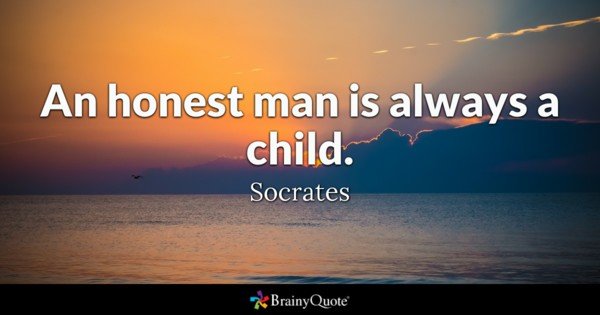

This blog will discuss a little bit about me, tracing gods, evolving theories, what does Wikipedia say about Nergal, how is Baron Samedi like Nergal, what do sources say about Ninghizzida, how is Papa Legba like Ninghizzida, how is Baron Samedi like Ninghizzida, what does a new source say about Baron Samedi and Papa Legba, and fb notes about my theories.
A Little Bit About Me
In 4th grade i was asked to join the Socrates program for gifted children in my school because my tests scores were so high, and it was an awesome experience that i was able to participate in for all of the years that they had it. I was headed to Texas A & M vet school at the end of high school; however, i was in a wreck that gave me brain damage. For many years i was in a fog that was thickened by psychotropic medicines. My PSAT scores were 98% before the wreck and SAT was 54% after it. At 50 and psychotrope free, i am feeling pretty confident that my intelligence has regained at least some semblance of what it was before. Alas, there is no Socrates program now, and i don't have many people to discuss the broad range of my thinking with. I was always drawn to the Occult, but the most knowledge that i gained came from attempting to do exorcisms as a christian to actually figuring out Who can help with them (Papa Legba and Baron Samedi). Enough about me, i wanna organize some theoretical stuff about gods as thought form beings.
Tracing Gods
When i first learned about Planets as gods and that the traits of gods could be traced back through the Ages, i was fascinated, and i thought everything was cut and dried. For instance, i thought that all gods based on Mercury were Incarnations of Papa Legba, and that Ninghizzida was Papa Legba while Nergal was Baron Samedi.
My blogs "Papa Legba is Mercury & He LOVES His Children" @ http://citedinfo.blogspot.com/2017/06/once-i-was-scared-catholic-girl-who.html and "Could Baron Samedi be the Sphinx?" @ http://citedinfo.blogspot.com/2017/06/could-baron-samedi-be-sphinx.html
were written in a Mushroom fueled time of many Shamanic Journeys in which i did my best to interpret what i was seeing and hearing. That's just the thing about visions, interpretation, and then comprehension. Interestingly, i knew that those blogs were just a beginning of a growing theory.
Evolving Theories
Sure enough, months later, after working on some blogs just to honor the Orishas for November, i am drawn back to expand upon said theories. As i was working on my Papa Legba blog i ran across a site that said Papa Legba and Baron Samedi are the same Entity which puzzled me because i see Them as separate Beings. Is it possible that Baron Samedi and Papa Legba are Incarnations of the same Energy??? Am i wrong when i say that Baron Samedi or Saturday is not based on Saturn and Papa Legba is not based on Mercury??? It's time to do some more analyzation of evidence so next some quotes from other sources will be presented.
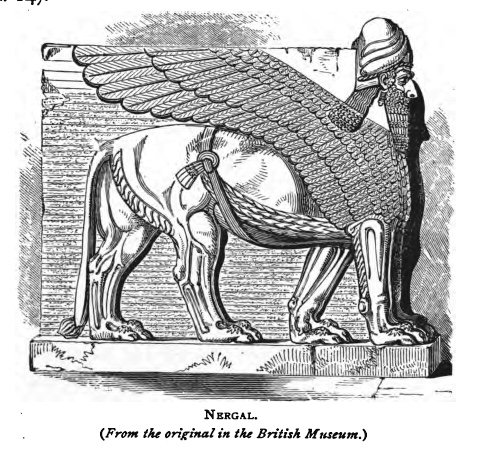
What Does Wikipedia Say About Nergal ???
"Nergal, Nirgal, or Nirgali (Sumerian: dGÌR-UNUG-GAL𒀭𒄊𒀕𒃲;[2] Hebrew: נֵרְגַל, Modern Nergal, Tiberian Nērḡál; Aramaic ܢܹܪܓܵܐܠ; Latin: Nergel) was a deity worshipped throughout Mesopotamia (Akkad, Assyria and Babylonia) with the main seat of his worship at Cuthahrepresented by the mound of Tell-Ibrahim.
Nergal is mentioned in the Hebrew Bible as the deity of the city of Cuth (Cuthah): "And the men of Babylon made Succoth-benoth, and the men of Cuth made Nergal" (2 Kings, 17:30). According to the Rabbis, his emblem was a cock[3] and Nergal means a "dunghill cock",[4] although standard iconography pictured Nergal as a lion. He is a son of Enlil and Ninlil, along with Nanna and Ninurta.
Nergal seems to be in part a solar deity, sometimes identified with Shamash, but only representative of a certain phase of the sun. Portrayed in hymns and myths as a god of war and pestilence, Nergal seems to represent the sun of noontime and of the summer solstice that brings destruction, high summer being the dead season in the Mesopotamian annual cycle. He has also been called "the king of sunset".[5] Over time Nergal developed from a war god to a god of the underworld.[6] In the mythology, this occurred when Enliland Ninlil gave him the underworld.[5]
Nergal was also the deity who presides over the netherworld, and who stands at the head of the special pantheon assigned to the government of the dead (supposed to be gathered in a large subterranean cave known as Aralu or Irkalla). In this capacity he has associated with him a goddess Allatu or Ereshkigal, though at one time Allatu may have functioned as the sole mistress of Aralu, ruling in her own person. In some texts the god Ninazu is the son of Nergal and Allatu/Ereshkigal.
Ordinarily Nergal pairs with his consort Laz. Standard iconography pictured Nergal as a lion, and boundary-stone monuments symbolise him with a mace surmounted by the head of a lion.
Nergal's fiery aspect appears in names or epithets such as Lugalgira, Lugal-banda (Nergal as the fighting-cock),[7] Sharrapu ("the burner," a reference to his manner of dealing with outdated teachings)[citation needed], Erra, Gibil (though this name more properly belongs to Nusku), and Sibitti or Seven.[8] A certain confusion exists in cuneiform literature between Ninurta (slayer of Asag and wielder of Sharur, an enchanted mace) and Nergal. Nergal has epithets such as the "raging king," the "furious one," and the like. A play upon his name—separated into three elements as Ne-uru-gal (lord of the great dwelling)—expresses his position at the head of the nether-world pantheon[citation needed].
In the late Babylonian astral-theological system Nergal is related to the planet Mars. As a fiery god of destruction and war, Nergal doubtless seemed an appropriate choice for the red planet, and he was equated by the Greeks to the war-god Ares (Latin Mars)—hence the current name of the planet. In Assyro-Babylonian ecclesiastical art the great lion-headed colossi serving as guardians to the temples and palaces seem to symbolise Nergal, just as the bull-headed colossi probably typify Ninurta.
Nergal's chief temple at Cuthah bore the name Meslam, from which the god receives the designation of Meslamtaeda or Meslamtaea, "the one that rises up from Meslam". The name Meslamtaeda/Meslamtaea indeed is found as early as the list of gods from Fara while the name Nergal only begins to appear in the Akkadian period. Amongst the Hurrians and later Hittites Nergal was known as Aplu, a name derived from the Akkadian Apal Enlil, (Apal being the construct state of Aplu) meaning "the son of Enlil"[citation needed]. As god of the plague, he was invoked during the "plague years" during the reign of the Hittite king Suppiluliuma, when this disease spread from Egypt.
The worship of Nergal does not appear to have spread as widely as that of Ninurta, but in the late Babylonian and early Persian period, syncretism seems to have fused the two divinities, which were invoked together as if they were identical. Hymns and votive and other inscriptions of Babylonian and Assyrian rulers frequently invoke him, but we do not learn of many temples to him outside of Cuthah.
The Assyrian king Sennacherib speaks of one at Tarbisu to the north of the Assyrian capital of Nineveh, but significantly, although Nebuchadnezzar II (606–586 BC), the great temple-builder of the neo-Babylonian monarchy, alludes to his operations at Meslam in Cuthah, he makes no mention of a sanctuary to Nergal in Babylon. Local associations with his original seat—Kutha—and the conception formed of him as a god of the dead acted in making him feared rather than actively worshipped.
In demonology[edit]
Because he was a god of fire, the desert, and the Underworld and also a god from ancient paganism, later Christian writers sometimes identified Nergal as a demon and even identified him with Satan. According to Collin de Plancy and Johann Weyer, Nergal was depicted as the chief of Hell's "secret police", and worked as "an honorary spy in the service of Beelzebub".[citation needed]"
https://en.wikipedia.org/wiki/Nergal
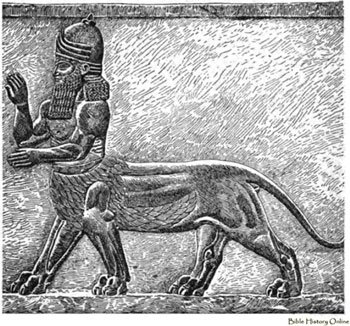
How Is Baron Samedi Like Nergal???
1)Nergal is known for resideing over sunsets
while Baron presides over the #9 and endings.
Baron Samedi is Head of the Ghede/Ghost
Nation and Nergal governs a council of the
dead in an underground cavern. What's even
freakier is that i just blogged about Baron
yesterday and mentioned my favorite dreams
are the ones that i am the Caverns. To me,
these Caverns have an iridescent purple hue
and i am with Maman and Baron down There
where i feel safe @
http://citedinfo.blogspot.com/2017/11/
the-fuing-awesome-bawon-of-saturday-
no.html.It says that Nergal is a god of plague which is
associated with the Saturnian Voodoo god
Babalu Aye ... Baron is also Saturn
@ http://citedinfo.blogspot.com/2017/11/
babalu-aye-has-wednesdays.htmlBaron Samedi is feared as god of the Dead
and not worshipped as with Nergal.
"Necromancy" is my first attempt to explain
that death sin't so scary as per my dreams
@ http://citedinfo.blogspot.com/2017/06/
necromancy.htmlNergal and Baron Samedi have both been
accused of being "Satan". Baron's power over
demons is a clue that He could be King of the
Underworld. My blog "The Misunderstood
Dark Side" @
http://citedinfo.blogspot.com/2017/06/
the-misunderstood-dark-side.html
takes a deeper look at Light and Darkness
to show that light does not equal good
just as darkness does not equal evil.It says Nergal is a Sun god, but the Sun used to Saturn, according to many scholars.
That quite a few points of similarity,
but i don't know. Actually, i do feel
great familiarity between the Two.
Possibly the energy of death feeds these gods??? But Nergal was known as an Annunaki Being in a physical body. Then there is symbolism.
Nergal, god of the Underworld, please not the conduces.
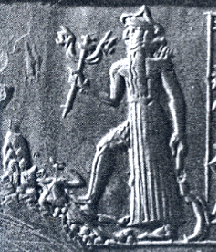
Baron Samedi in New Orleans, please note teh cross and snake symbolism.
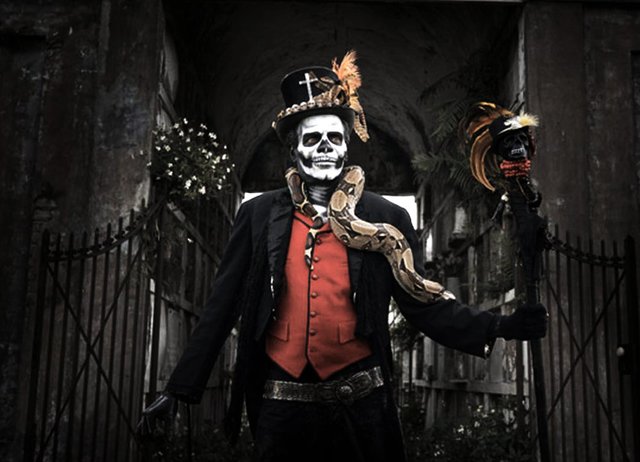
The final pic is understood to be drawn by Zulu Shaman, Credo Mutwa, who i am very impressed with. Notice that there is a cross a serpent, and a top hot on both Baron and Nergal.
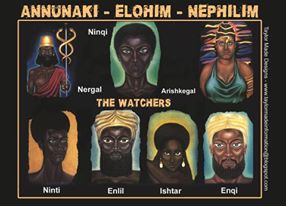
Now to Papa Legba.
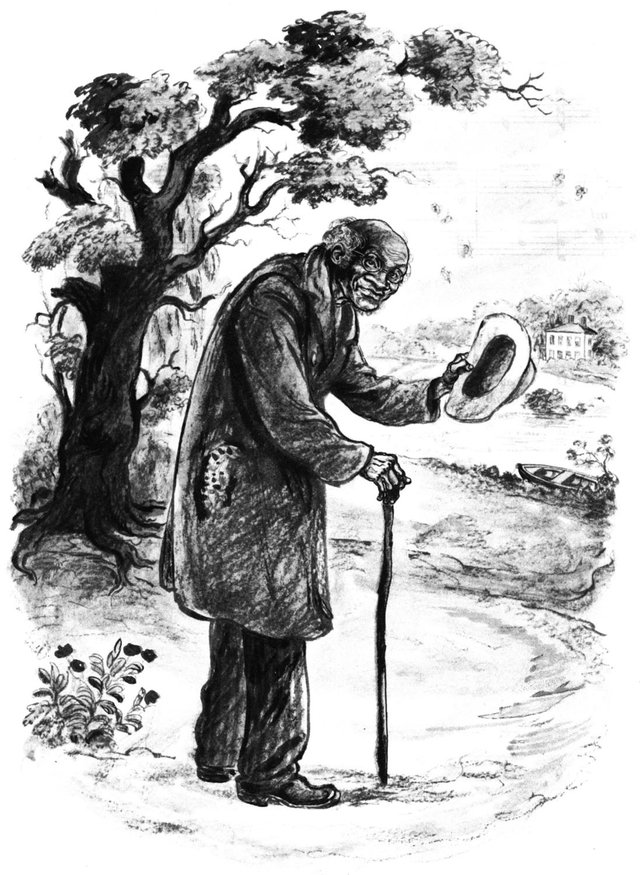
What Do Sources Say About
Ninghizzida???
Zionist influenced Wikipedia had scant
information about both Ninghizzida and
Papa Legba.
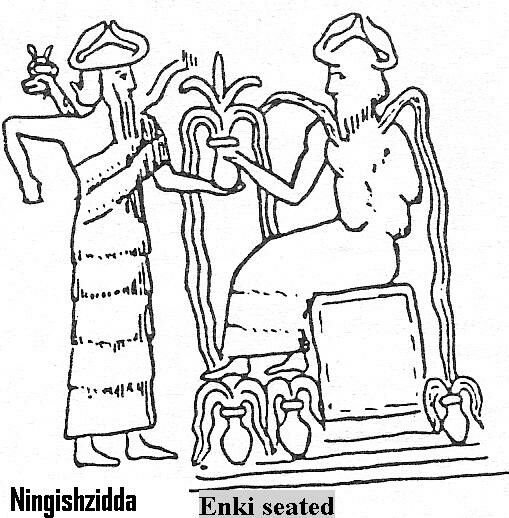
"Resume
Ningishzidda
(aka Thoth, Djedi, Hermes Trismegistus, Quetzalcoatl, et al)
Previous Employment: Sumerian, Egyptian, Greek (et al) God
Experience and Abilities: Alchemy, Pyramid Building, Wisdom, Communicator
Position sought: Lord of Earth
References:
According to Zecharia Sitchin, Ningishzidda, Herm, is the son of Enki and Ereshkigal (the Sumerian Queen of the Underworld). Despite the Enki and Enlil rivalry, however, Herm was highly regarded by all the factions in the sibling arch rivalry. In his Egyptian role as Thoth, Herm was “the falcon among the gods”, the “god of the cord who measures the Earth”, the Anunnaki who was appointed to be guardian of the secrets of The Great Pyramids of Giza, as well as the god who replaced Horus (son of Isis and Osiris) on the throne of very, very ancient Egypt.
There is also a hymn to Ningishzidda, exalting his pyramid house in Egypt."
Zecharia Sitchin, The Wars of Gods and
Men, Avon Books, New York, 1985.
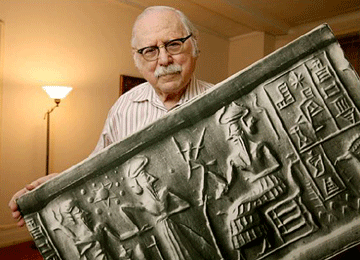
Shit...fuck...damn...i lost this link, but i need
to finish up here and get on with life.
Another cite says that "Ningishzida is portrayed as either a serpent with the head of a man, or, more frequently, as a double-headed serpent coiled into a double helix. It is believed that the Greeks also made use of this symbolism in their myth of the caduceus, the wand of Hermes/Mercury which is associates with theft, deception, and death (for Mercury was a psychopomp who led souls to the underworld with his staff). Of course contemporary people are familiar with the double helix as well. We know that DNA, the fundamental blueprint of life is latticed together on a double helix. It is strange that the first use of this symbol is a mysterious Sumerian tree/snake god who apparently also appealed to Jewish scholars during the Babylonian captivity. "
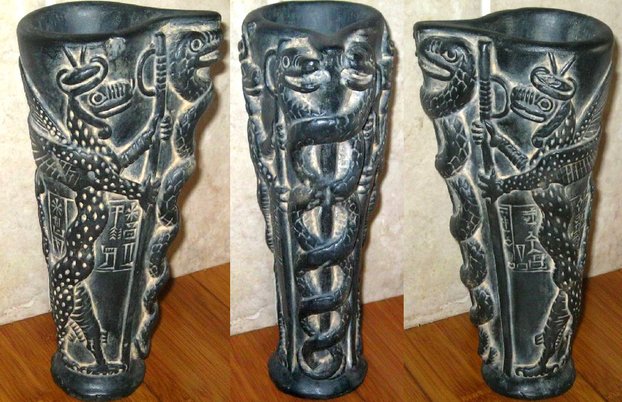

https://ferrebeekeeper.wordpress.com/tag/ningizzida/
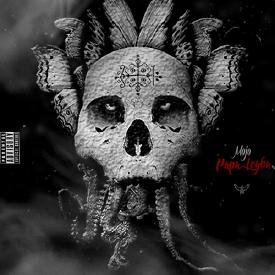
How Is Papa Legba Like Ninghizzida???
Both are known for communication.
Wisdom is a trait that They share.
Both are loved by everyone in Their Pantheons.
How Is Baron Samedi Like Ninghizzida???
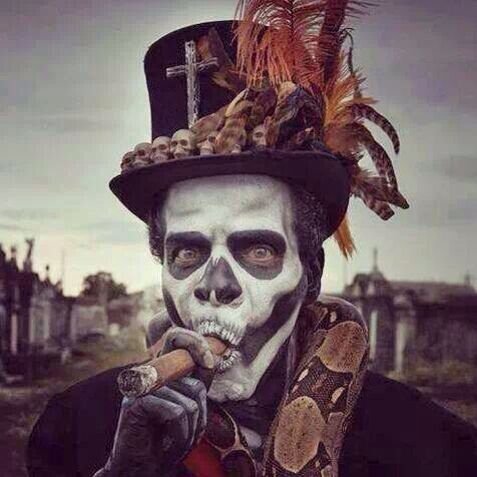
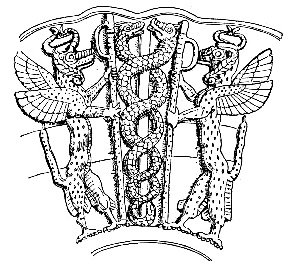
It's all in the symbolism. Papa Legba is represented by the Cross just like Baron Samedi; however, Baron is depicted with Serpents while Papa is not. Although all of Voodoo was known for working with Serpent Folk. I don't know, but it's brewing ;)
What Does a New Source Say About Papa Legba and Baron Samedi???
Excerpts from Descriptions of Various Loa of Voodoo tell us that:
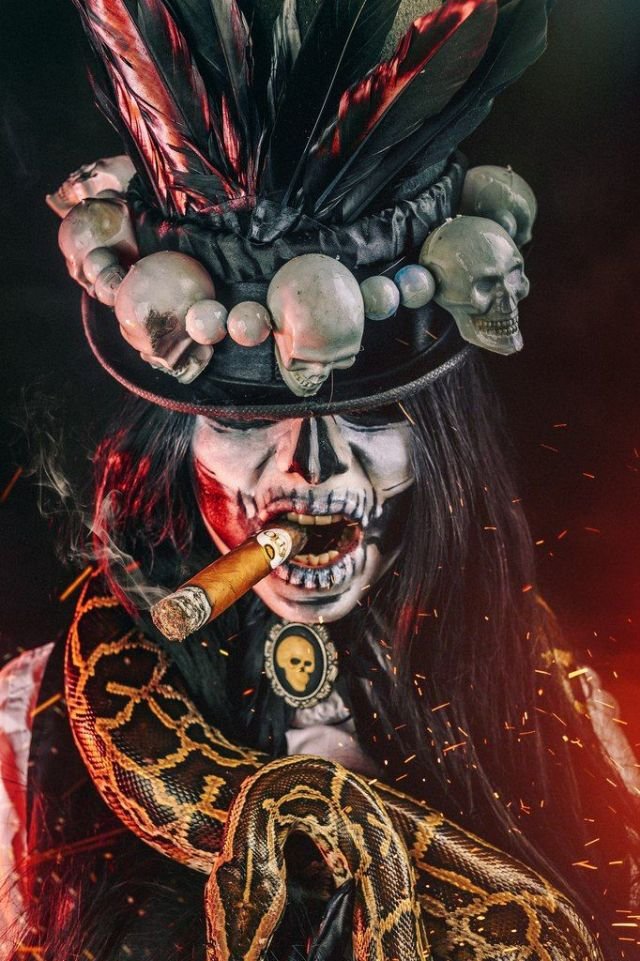
Baron Samedi
"(Papa Ghede) Ghede is the eternal figure in black, controlling the eternal crossroads at which everyone must someday cross over. His symbol is the cross upon a tomb. Known as the spirit of death, other spirits fear him and try to avoid him.He operates under the direction of Baron Samedi.
Baron Samedi represents the death side of Ghede (Guede). He talks through his nose, is cynical, jovial, and tells broad jokes. His language is full of the unexpected. His tools are the pick, the hoe, and the spade. He is the power behind the magic that kills. He controls the souls of those who have met death as a result of magic.
When he appears (mounting someone at an invoking ceremony), he wears a pair of dark glasses, from which he knocks out the right lens: for with his right eye he watches those present, lest anyone steal his food.
Of especial interest is the testimony of Ghede; for when this god mounts his carriers, they are bereft of any sense of self, behave and speak compulsively, and recover knowing nothing of what they did or said.
Loa of death, sexuality, and keeper of the cemeteries. He is enamored of women, makes constant use of obscene words and songs, and performs obscene dances. When someone is mounted by Guede they put on a black undertaker's coat, a black top hat and stuff cotton in their ears and noses, this to symbolize a dead person. After they are dressed up they must then perform the banda dance, an erotic dance in which one imitates the movements of copulation.
The Guedes live in cemeteries and visit Catholic churches at night. On November 2 the faithful visit cemeteries and light candles in honor of Baron Samedi.
Papa Guede is a much loved loa because his appearance always brings laughter and joy, singing and dancing; he is usually the last to appear at a ceremony.
He is the loa of death and resurrection; is known as a total clown; loves cigarettes; is often seen smoking two at a time.
He is neither good nor evil, but he is amused by humans and that's why he jokes around so much.
Ghede is sort of to the underworld or afterlife what Legba is to life--he who controls access. Ghede controls access to everything in the afterlife.
We are reminded by him that our understanding of death and life is limited and that both are beyond our comprehension.
Ghede is also god of eroticism. Eroticism is beyond good and evil since it is inevitable. Ghede is neither delighted by eroticism, and certainly not shamed by it. If anything, Ghede is amused by the universal presence of eroticism and humans' constant need to pretend that it is other than what it is.
It is believed that his obscenity in sexual matters is an affirmation of life in the midst of death.
Ghede is also often called BARON SAMEDI. In this aspect he is DEATH. He is the keeper of the cemetery and the primary contact with the dead. Anyone who would seek contact with the dead must first contact and solicit Ghede/Baron Samedi in the same way that Legba is contacted to cross over to the spirit world.
But he is history too. As keeper of the cemetery he has intimate contact with the dead. He knows what their plans were, what's going on in families, what the connections of things are. And he is quite generous with his information. Even when he is clowning or performing his erotic antics, if you can pull him aside and ask him a serious question you will get a serious and reliable answer.
Another of Ghede's great powers is as the protector of children. Ghede generally does not like to see children die. They need a full life. Thus he is the loa to go to when seeking help for a sick child.
Ghede has the power over zombies and decides whether or not people can be changed into animals. Any such black magic voodoo must seek the help of Baron Samedi/Ghede with these tasks.
Lastly, since Ghede is the lord of death, he is also the last resort for healing since he must decide whether to accept the sick person into the dead or allow them to recover.
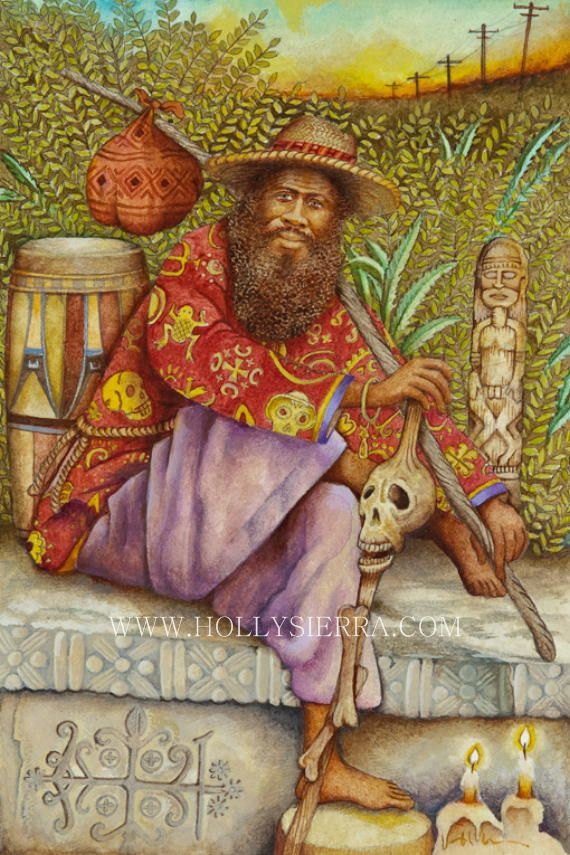
Papa Legba
Legba: Old man who guards the crossroads. He is the origin of life, so he must be saluted each time a service or any other activity with the loa will begin. Legba controls the crossing over from one world to the other. He is the contact between the worlds of spirit and of flesh.
He can deliver messages of gods in human language and interpret their will. He is the god of destiny and is also the intermediary between human beings and divine gods.
Legba is one of the most important loa in Haitian voodoo. He is the first loa to be called in a service, so that he can open the gates to the spirit world and let them communicate with other loa. No loa dares show itself without Legba's permission. Whoever has offended him finds himself unable to address his loa and is deprived of their protection. He is the origin and the male prototype of voodoo.
Voodooists believe that if Legba grants their wishes, they can contact the forces of the universe.
He is the guardian of voodoo temples, courtyards, plantations,, and crossroads. He protects the home. If you are going on a trip, it is believed that you pray to Legba for protection from harm and a safe return home.
As "Master of Crossroads" he is the god of every parting of the way--a favorite haunt of evil spirits and propitious to magic devices; and it is at crossroads that he receives the homage of sorcerers and presides over their incantations and spells.
He is a small crooked lovable old man. Small pipe with little tobacco, a little food in his macoute sack. Sores on his body. His pitiful appearance has earned him the nickname of Legba of the Broken Foot but conceals the terrific strength which becomes apparent in the violence of possession induced by him.
Because of his politeness and caring nature he is greeted as Papa Legba. He is a much loved loa.
When he mounts someone the person's limbs are twisted and horrible to see. The crutch is the symbol of Legba. The outward appearance of Legba hides a very powerful interior.
Legba is the symbol of the sun, of daylight, of things positive. Legba controls the cardinal points of the crossroads.
The interpreter to the gods can deliver the messages of the gods in human language and interpret their will. He is the god of destiny, honored first at every ceremony, receiving first offerings. He is represented by a wooden or iron phallus mounted in a little mound of earth in front of every house.
Legba is also known to hold the "key of the spiritual world", and for this reason is identified with the Christian St. Peter.
Legba's colors are green, rose, and red."
http://faculty.webster.edu/corbetre/haiti/voodoo/biglist.htm
Next, i will add some of my typings from fb
that address my theories.
FB Notes
i have been reflecting on the claim that the Orishas are thought forms...but idk....They are much more helpful and powerful than angels or demons or even yahyew....hasn't yahyew's team recieved enough blood sacrifice of innocent chiuldren to make them more powerful that the Orishas if they are all thought forms... ???
Possibilities that children can give us Spirit messages ...of all my 2-year-old grand baby's toys she wants to sleep with Papa Legba's corn cob pipe and the stuffed Monkey....also....the ghost is gone from where she lives and, Black Mist was seen after Papa told me to warn them not to be scared by black mist or smoke....also...these girls been using Papa's cane like they have seen Him or someone else using cane....but at 1 and 2 it makes more sense that they see Papa Legba....the 2-year-old acts like she knows exactly who I mean when I say Papa Legba...she knows GNOS that He's not just a doll baby that Nana keeps
my theory is expanding ...did Y'all know psychology, philosophy, and possibly psychiatry started as someone's theories...i think that the things we are obsessed with may link to our past lives as well as spirits with whence we commune....i am an Ancient Earth soul & i am obsessed with working on wrongs that have been wrought by deception to my Peoples....whereas, Ur Star Seeds are mostly obsessed with Love & Light ... Willy is obsessed with the Allied Forces and me with the Nazis...what if we are working out past tensions :idk, i idk but it's possible
thanx to Willy i have a vital final step in attacking "elite"/jew/catholic/masonic pedophile feeding entities on astral...gotta to ask Hanuman to shield me & mine from ping pong....cuz they do attack back...U better fuckin believe it.... i do NOT understand how He does it, but He's powerful my Eguns and Ghedes will fight true for me, but with Hanuman we are all shielded and have time to heal... Rainbow diaspora of gods beating the "system" :)
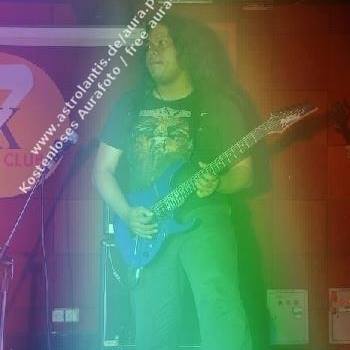
Willy is my bestie, an Eastern Shaman. You can see he has a rainbow aura. He is Buddhist and very coolio. He gives us a cool hynosis method @ http://citedinfo.blogspot.com/2017/11/willy-teaches-us-self-hypnosis-eastern.html
Hanuman is the Hindu Monkey god Who is a defeater of evil Who keeps the Doors for Kali, and likes to play tricks. He helps me too; i do see Him shielding me. Amazing !!! Even more amazing that the 2-year-old grabbed the pipe and the monkey doll. Thank You for reading my blog :) Blessed Be )O(
